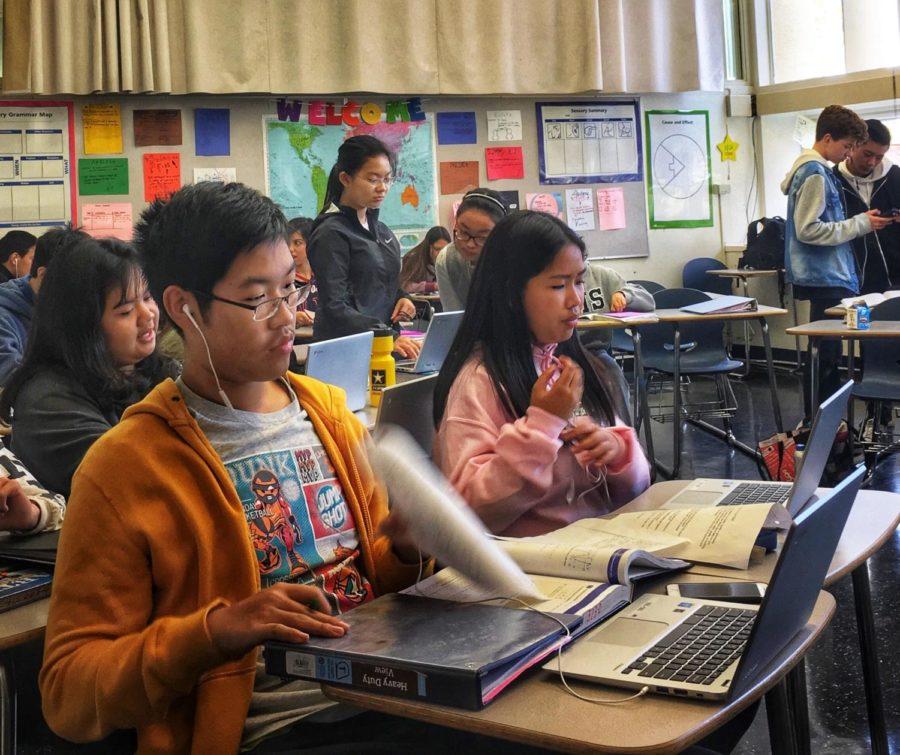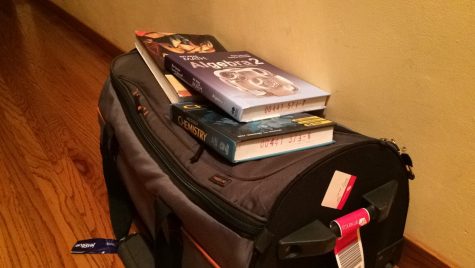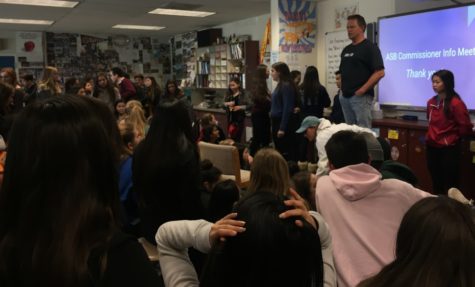For Rebecca Shentu, Manon Llorach, and Sarah Tocatlian, moving to a new country was just the beginning of a new journey.
The transition from middle school to high school can be tough, but it is even harder for those who are transitioning from one country to another. Many international students at Carlmont moved to the Bay Area at the beginning of high school.
“I moved here from China about two years ago when I was a freshman,” said Shentu, a junior.
According to the California Department of Education (CDE) Data Reporting Office, Carlmont had 84 international students during the 2016-17 school year, making up 4 percent of the school population.
“Carlmont has the smallest, yet most diverse population of international students compared to other schools in the district,” said Gregg Patner, an administrative vice principal at Carlmont.
Though English is taught in many schools around the world, most international students learn English from non-native speakers and, therefore, feel unprepared to speak fluently here.
“I didn’t speak English when I first came here in fourth grade,” said Llorach, a junior. “It took me about two to three years to speak fluently, but I was still worried about my accent.”
In addition, Reclassified Fluent English Proficient (RFEP) students made up 13 percent of the Carlmont population during the 2016-17 school year. According to the Union School District, RFEP students are international students who became fluent in English and are now put into regular English classes.
When first arriving in the U.S., international students can find it difficult to fit in with their peers because of their English speaking abilities. Both Llorach and Tocatlian said that their accents made it harder for them to fit in with their classmates.
“I lived in England before moving here, so I had an accent when I went to school,” said Tocatlian, a senior. “Going to a new school is hard, especially if you sound different.”
Language barriers can be a problem not only in social situations but also in academic ones. Many of the classes that students take, such as science or history, don’t offer language help inside the classroom and are designed for fluent speakers.
“Students have to take mainstream classes, and sometimes teachers assume that they know more than they actually do,” said Theresa Torres, a school counselor at Carlmont. “We have a classroom aid, but they can’t be in multiple places at once.”
The ELL (English Language Learners) class is where the international students start when they begin attending Carlmont; it helps the students learn English and provides help with homework.
Since the ELL class is not a college-preparatory (CP) English class, international students might find it harder to meet the A-G requirements needed to get into Universities of California (UC) and California State Schools (CSU).
“In order to meet the A-G requirements, all students need to take at least four years of English, but unlike ELL-ELD (English Language Development) three, ELL-ELD one and two don’t fulfill those requirements,” Torres said. “This means that some students will have to take English classes at summer school in order to fulfill the A-G requirements.”
On top of dealing with having to graduate, international students may not even stay at Carlmont for all four years. International students have to move for different reasons, causing them to have to deal with loads of academic and personal stress.
“Some students move because their parents got a new job in the Bay Area, but others might have had to move due to economic, political, or social problems facing their country,” said Jennifer Lord, the ELL teacher at Carlmont. “It’s different for everyone, and everybody has their own unique experiences.”
On top of all the academic and social stress at school, international students might have to deal with stressful situations at home.
“It’s difficult to deal with things like visas and green cards,” Tocatlian said. “It’s a struggle to worry about whether or not you get to live here just because someone else decides whether to give you a green card or not.”
When international students first come to Carlmont, they are tested on their English skills. The test determines the level of ELL they will take, or if they are ready to take regular English.
“I transferred to Carlmont during my sophomore year and got put into this class, but I tested out of it this year,” Shentu said.
The ELL teachers and mentors teach speaking, listening, writing, and similar topics with the students. They work to prepare their students for their current and future classes.
“When they first come to the class, we break down the material and the expectations,” Lord said. “We practice skills such as listening and speaking in English because they are a large part of social and academic life here.”
Regardless of their English speaking abilities, students become closer to their ELL classmates and find many new friends.
“Since this class is heavily peer-oriented, students are interacting with each other all the time,” Lord said. “We encourage them to sit with different people who speak other languages so that they all practice English while talking to each other.”
All the students in the ELL classroom have Torres as their counselor. Torres works with them and helps them with whatever issues might be going on.
“I try to come into the classroom often so that they get familiar with me and feel comfortable to come to me with their problems,” Torres said. “Sometimes when they seem too stressed or frustrated in class, they will come to my office so that we can talk and figure out the problem.”
The ELL teachers and mentors make sure to show the students that there is more than one way of speaking English; the language isn’t all black and white and many different variations exist.
“Language acquisition is about finding personal expression,” Lord said. “We want to teach them that having an accent is okay because everyone has their own way of speaking.”
The ELL teachers work with ASB to get the students more involved with the Carlmont community.
“The ELL students get to see us on our typical work days, and they usually help us with posters,” said Jim Kelly, the activities coordinator at Carlmont.
Being an international student comes with its own set of difficulties, but the ELL class provides opportunities to deal with them.
“This class gives newcomers a space to try everything and develop their own academic personality,” Lord said.
















